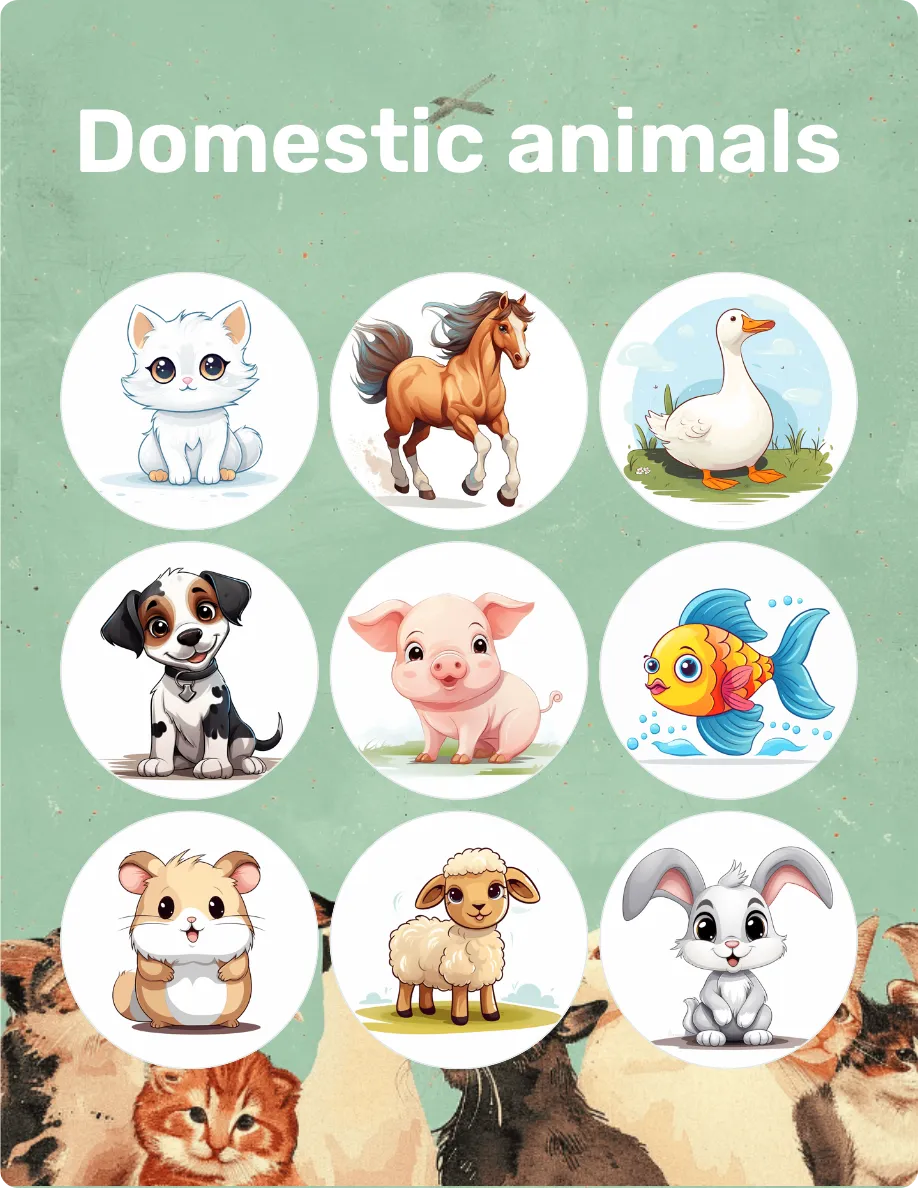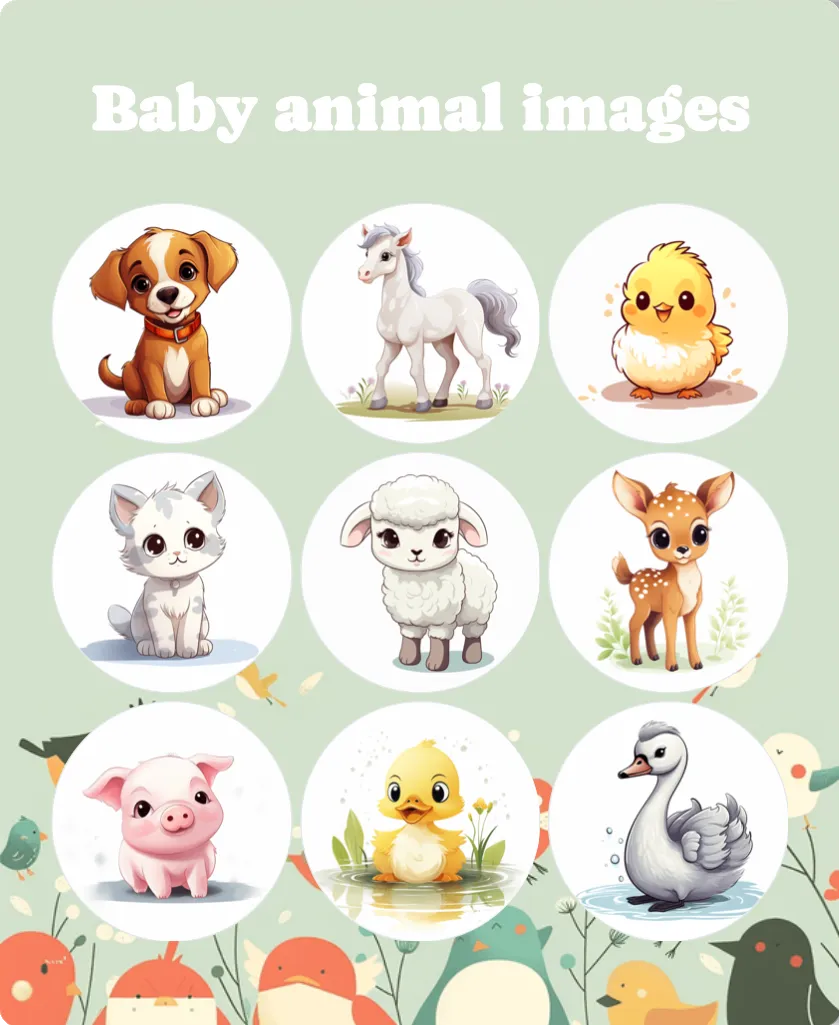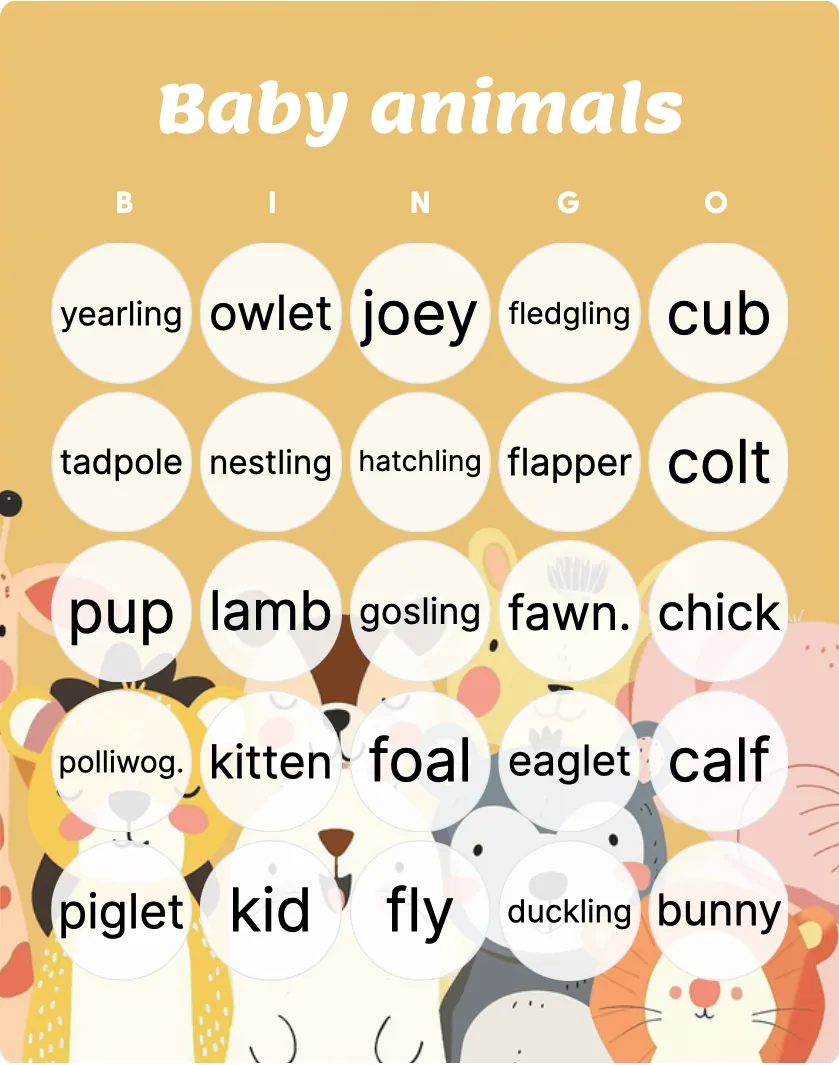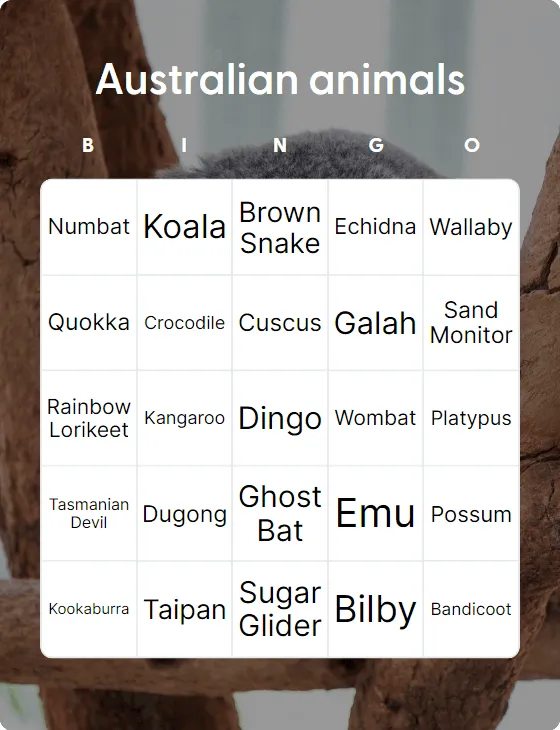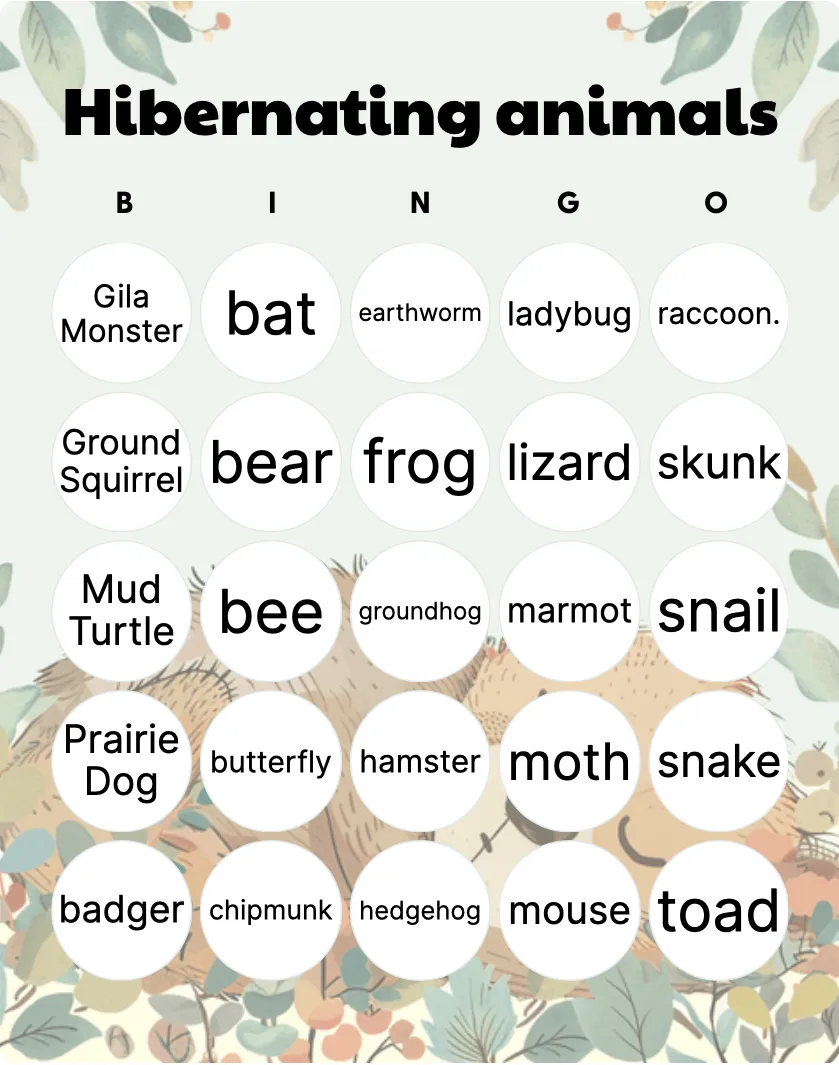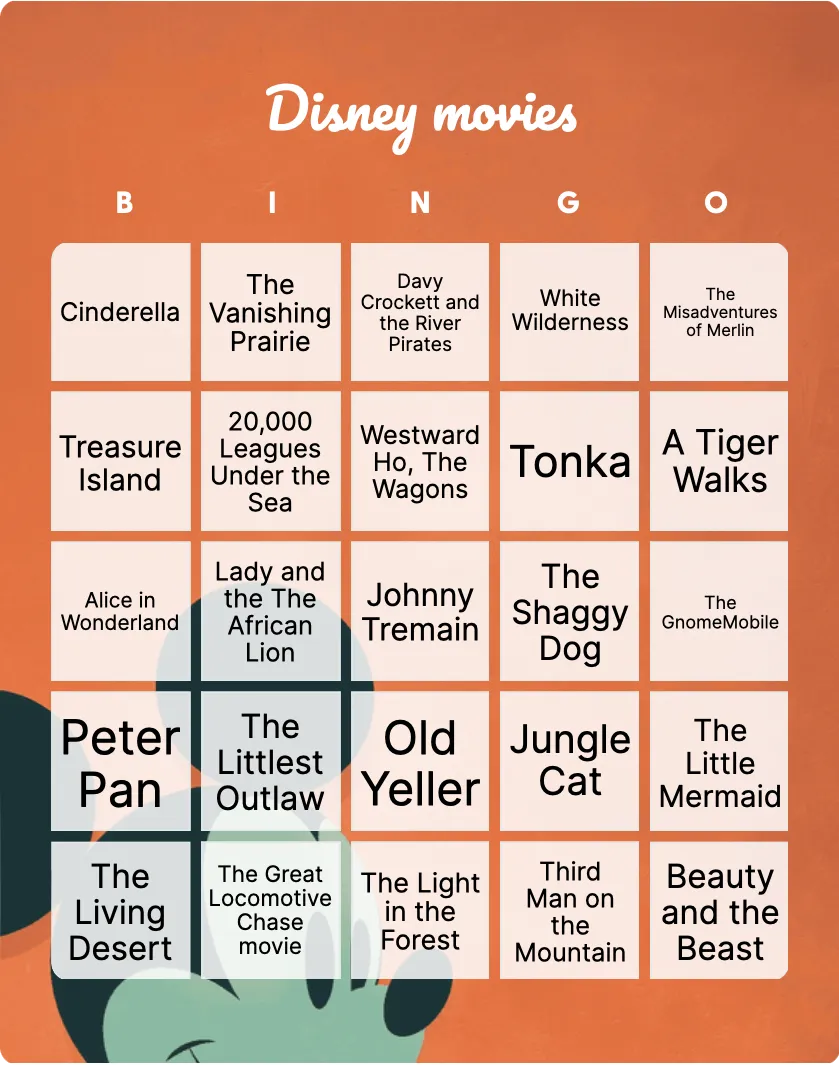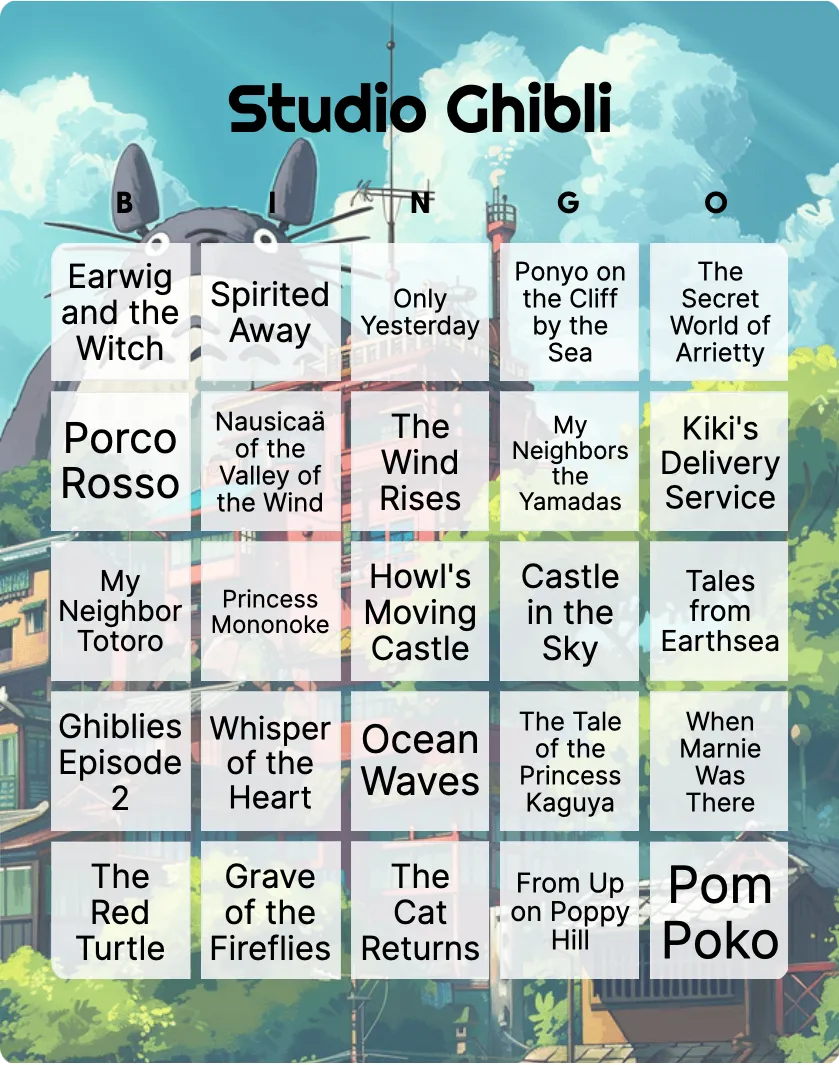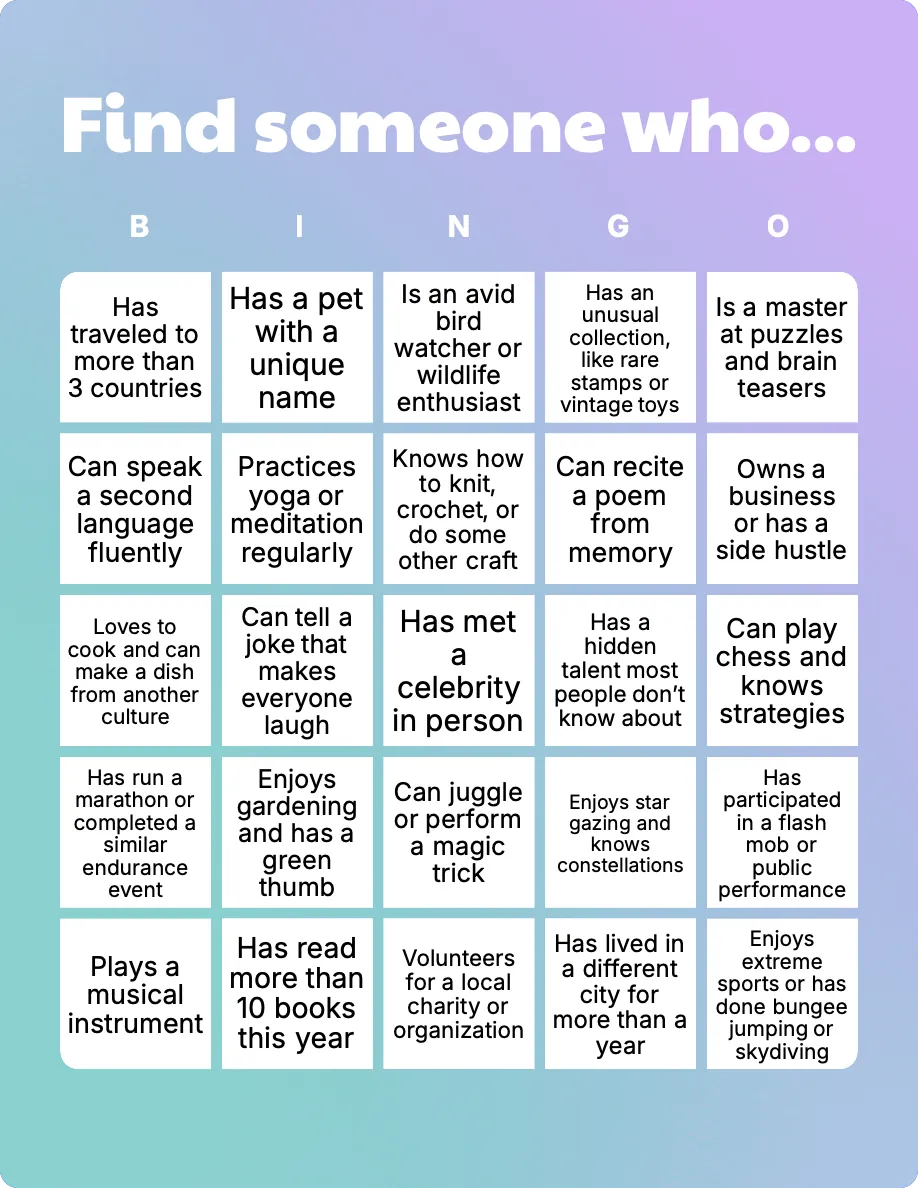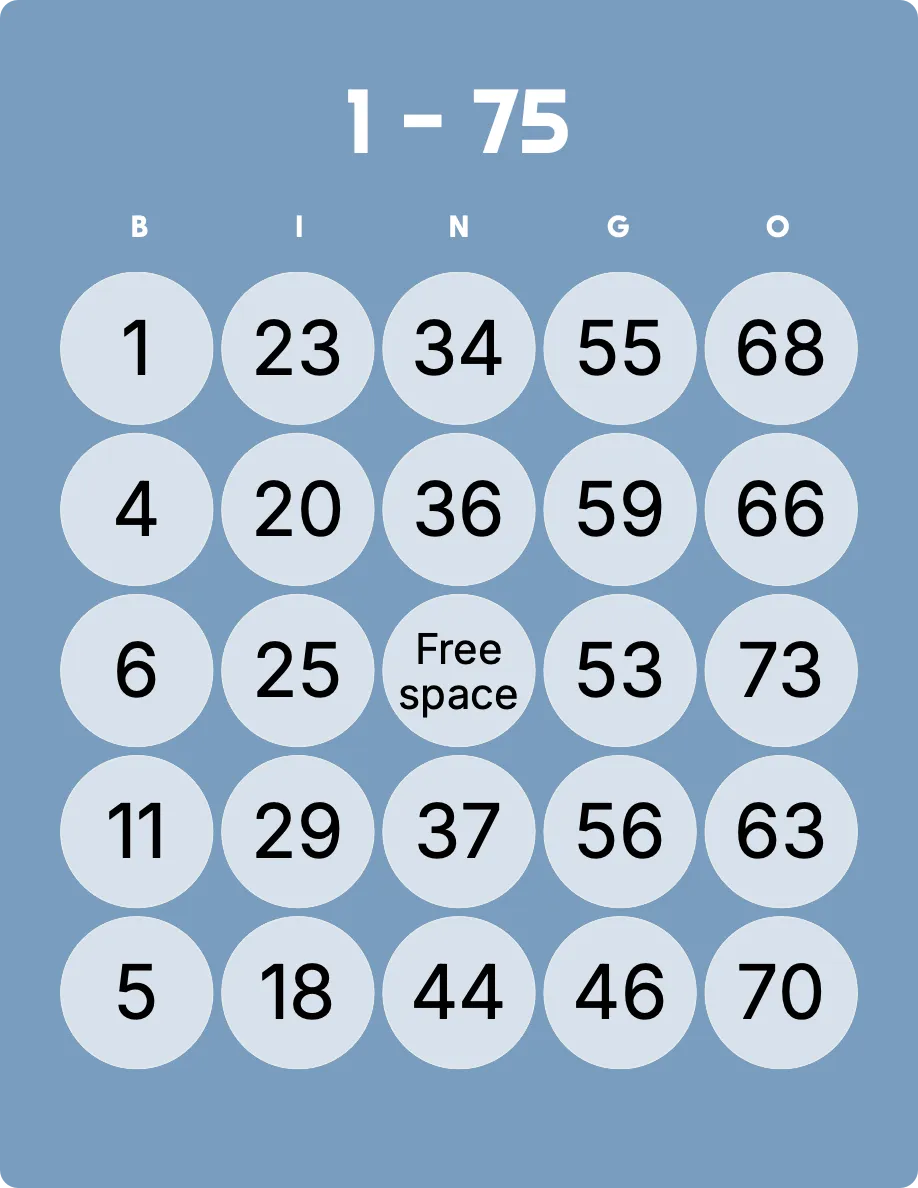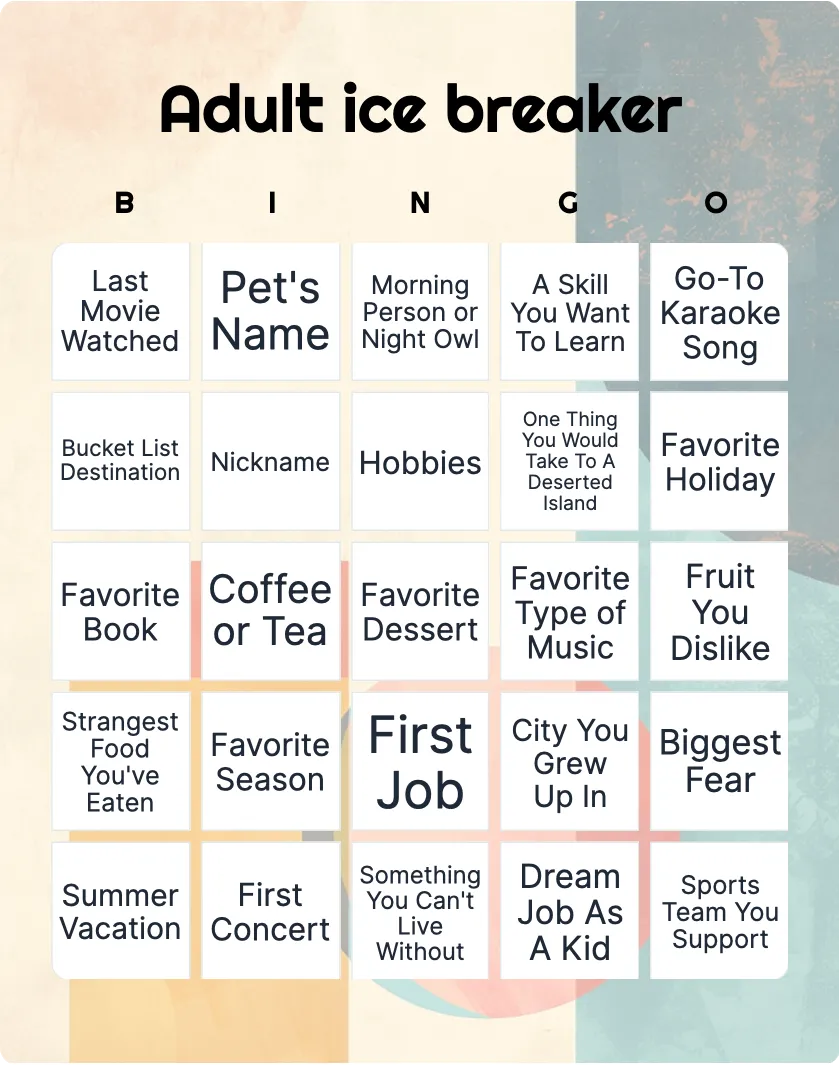50 team building games for kids
Unearth the ultimate guide to 50 team-building games for kids, where fun meets valuable life lessons in teamwork, communication, and problem-solving.
- Reading Time
- 15 min read
- Publish Date
- Oct 12, 2023
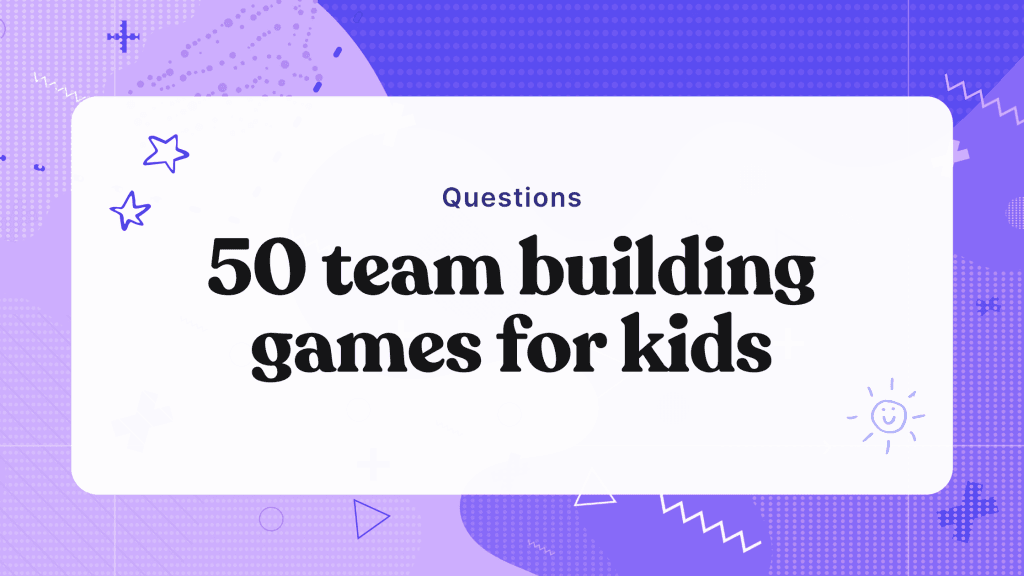
Our ultimate guide to 50 team-building games for kids is packed with fun activities that not only promote cooperation and communication but also spark creativity and laughter. Whether you're a teacher, camp counselor, or parent planning a playdate, these games are perfect for kids of all ages.
From classic favorites like relay races and scavenger hunts to creative challenges like chalk art collaborations and holiday-themed trivia, there's something for every group and occasion. These activities help children develop essential social skills, build trust, and create lasting memories with their peers.
So, gather your team, set the stage for fun, and watch as friendships bloom and teamwork thrives with these fantastic games. Get ready to play, laugh, and learn together with our collection of team-building games for kids!
Team building games for kids generator
Want to generate team building games for kids randomly? Select the generate button below
Table of contents
- Why team building is essential for kids
- 1. Tug-of-war
- 2. Three-legged race
- 3. Egg-and-spoon relay
- 4. Bingo: The animal kingdom
- 5. Sack race
- 6. Scavenger hunt
- 7. Human knot
- 8. Tower of cups
- 9. Charades
- 10. Dodgeball
- 11. Blindfolded drawing
- 12. Over-under
- 13. Capture the flag
- 14. Simon says
- 15. Water balloon toss
- 16. Tag
- 17. Pictionary
- 18. Musical chairs
- 19. Jenga
- 20. Bingo: movie mania
- 21. Hot potato
- 22. Obstacle course
- 23. Balloon pop
- 24. Freeze dance
- 25. Spelling bee relay
- 26. Alphabet scavenger hunt
- 27. Balloon stomp
- 28. Telephone
- 29. Story circle
- 30. Pass the parcel
- 31. Human tic-tac-toe
- 32. Build a story
- 33. Animal charades
- 34. Group juggle
- 35. Chalk art collaborations
- 36. 20 questions
- 37. Flashlight tag
- 38. Minefield
- 39. Trivia time
- 40. Bingo: food frenzy
- 41. Puzzling out
- 42. Parachute games
- 43. Sardines
- 44. Frisbee golf
- 45. Relay races
- 46. Newspaper fashion show
- 47. Marble run
- 48. Sink the ship
- 49. Word association
- 50. Duck, duck, goose
- Summary
Why team building is essential for kids
- Fosters communication: Team-building games compel kids to express themselves and listen to others, key skills in both friendships and the classroom.
- Enhances problem-solving: Games that require strategy help children learn to solve issues as a team, rather than individually.
- Teaches conflict resolution: Playing together inevitably leads to disagreements; team-building games teach how to resolve these peacefully and constructively.
- Builds confidence: Working in a team can validate a child's ideas and abilities, giving them the confidence to voice their opinions in other settings.
- Encourages collaboration: Teamwork is not innate. Children learn the joy and challenges of collaboration through these fun-filled activities.
1. Tug-of-war
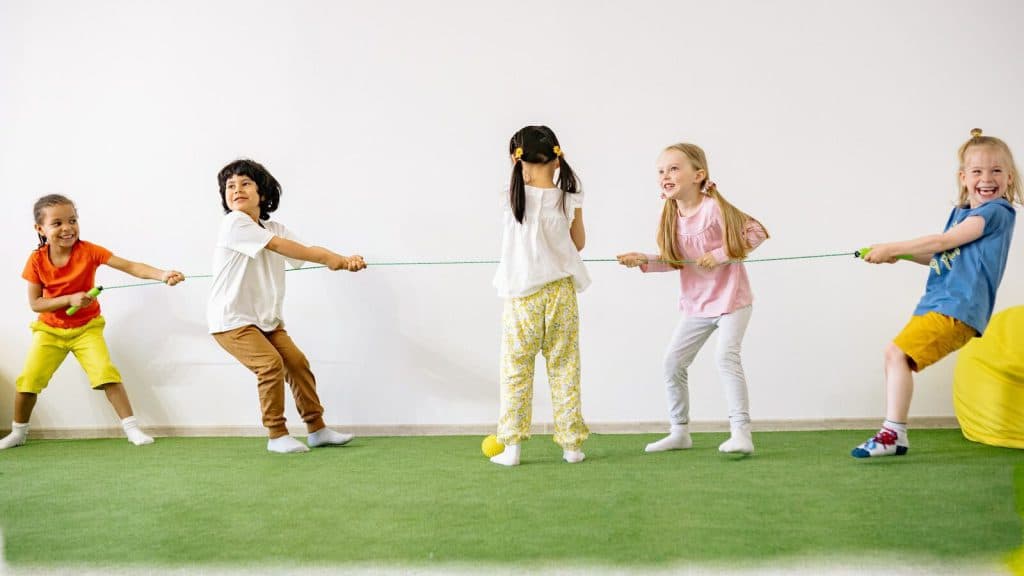
Ah, the classic tug-of-war. Two teams, one rope, endless fun. Just remember, it's not just about strength, but also about strategy and collaboration.
Why it's good
Teaches kids the essence of collective strength and the importance of everyone pulling their weight, literally.
2. Three-legged race
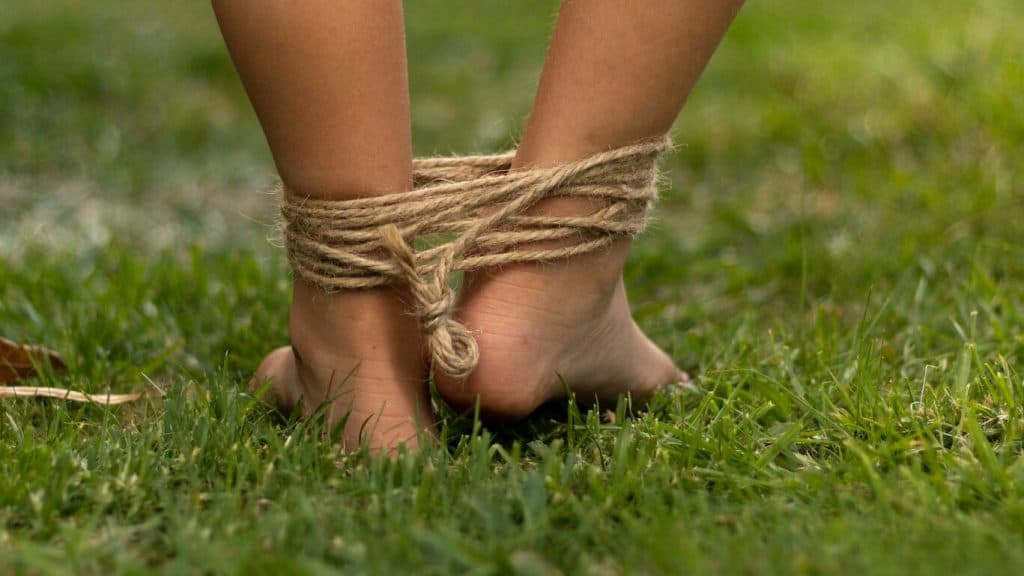
Pair up and tie one leg together. The key here is to move in sync. It’s a crash course in coordination and partnership.
Why it's good
Encourages close physical and verbal coordination, solidifying the notion that partnerships are stronger than solo efforts.
3. Egg-and-spoon relay

Balance, focus, and a dash of speed! Kids race while balancing an egg on a spoon, trying not to let it fall. It’s a test of precision and poise, making it a perfect team-building challenge.
Why it's good
Promotes focus and teamwork as each member must complete their part for a collective win.
Top Tip: Use water balloons instead of eggs for a hilarious twist. You're welcome.
4. Bingo: The animal kingdom

Try bingo but with animals. Create your own custom animal bingo cards and go for a zoological bingo win. This is where our bingo card generator comes in handy, especially with options for customization galore, from grid sizes to emoji!
Short on time? We've got some pre-made animal related bingo cards to get you started!
Animal bingo cards
Why it's good
Fosters language skills and shared knowledge of animals, making it a fun and educational team activity.
5. Sack race
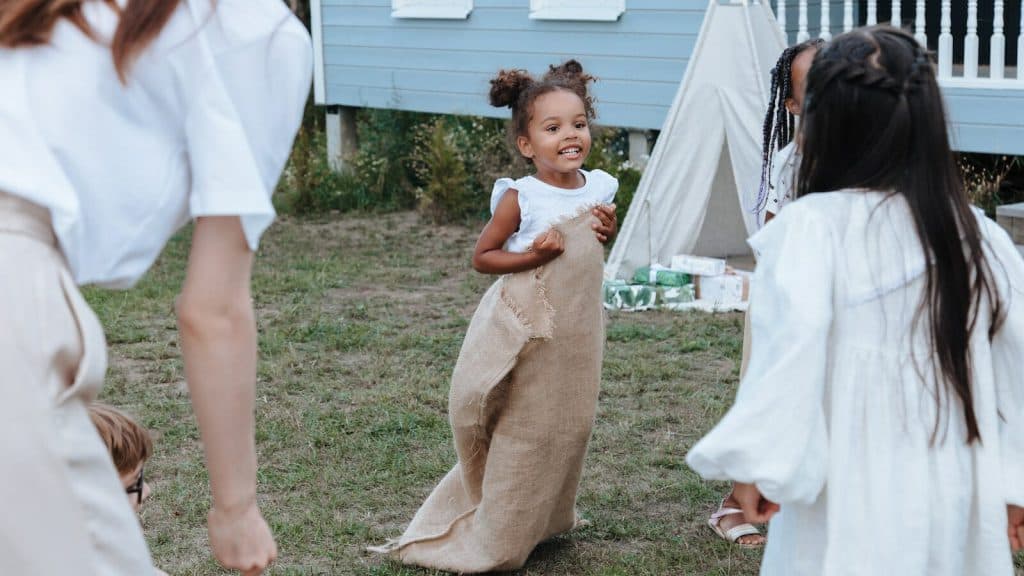
Jump, laugh, and maybe even tumble a bit! In the Sack Race, kids hop towards the finish line in large sacks. It's an old-school game that brings new levels of fun and teamwork to any event.
Why it's good
Teaches resilience and coordination, instilling the value of overcoming obstacles as a team.
6. Scavenger hunt
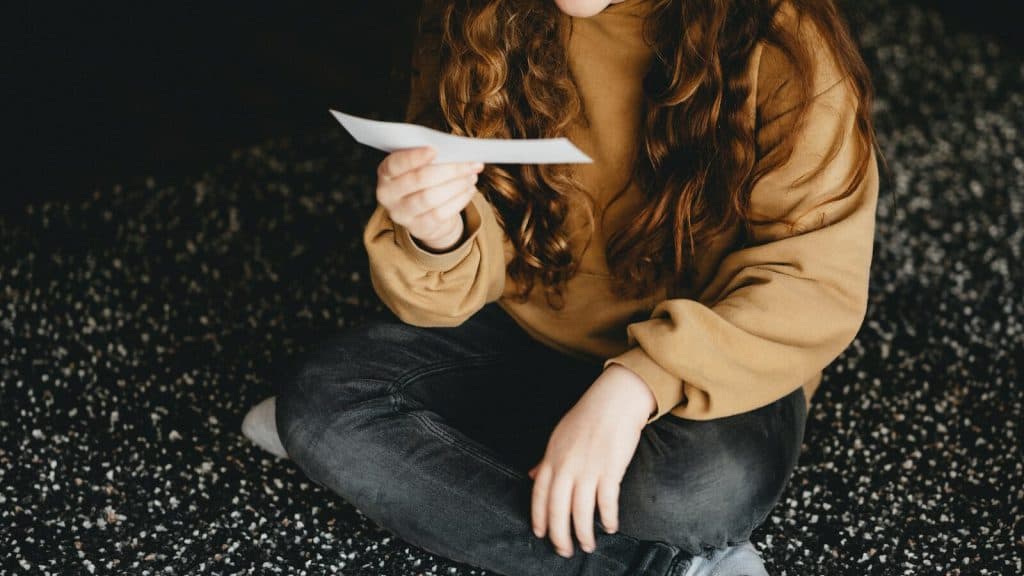
On your mark, get set, find! Kids split into teams and race to find a list of items or complete challenges. It’s an adventurous and explorative way to build camaraderie among teammates.
Why it's good
Enhances problem-solving and communication skills as teams navigate and make decisions together.
7. Human knot
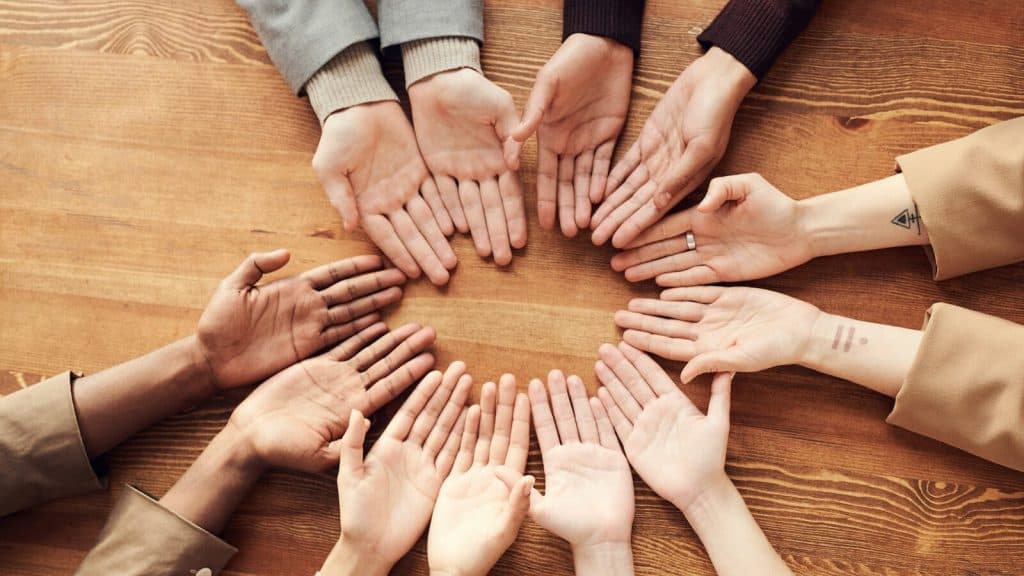
Everyone stands in a circle, grabs someone else's hand, and tries to untangle the knot. It’s like Twister but with more logic.
Why it's good
Forces kids to communicate and strategize effectively to solve a complex, interconnected problem.
8. Tower of cups
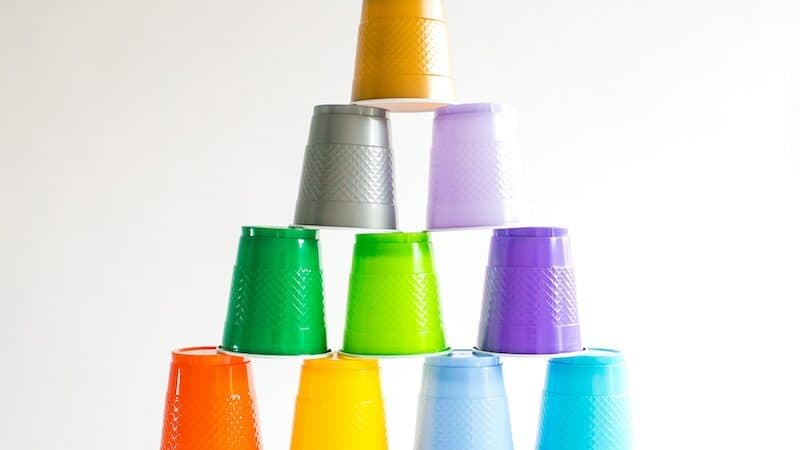
With a rubber band and some string, each team must stack cups into a tower. Spoiler alert: it’s harder than it looks.
Why it's good
Promotes engineering thinking and problem-solving as teams must collaborate closely to construct a stable, towering masterpiece.
9. Charades
It's a game of guessing, gesturing, and giggles! In Charades, kids act out words or phrases without speaking, while their team tries to guess what it is. A hilarious way to sharpen communication and teamwork skills.
Why it's good
Improves interpretive skills and empathy as kids try to convey and understand non-verbal cues.
10. Dodgeball
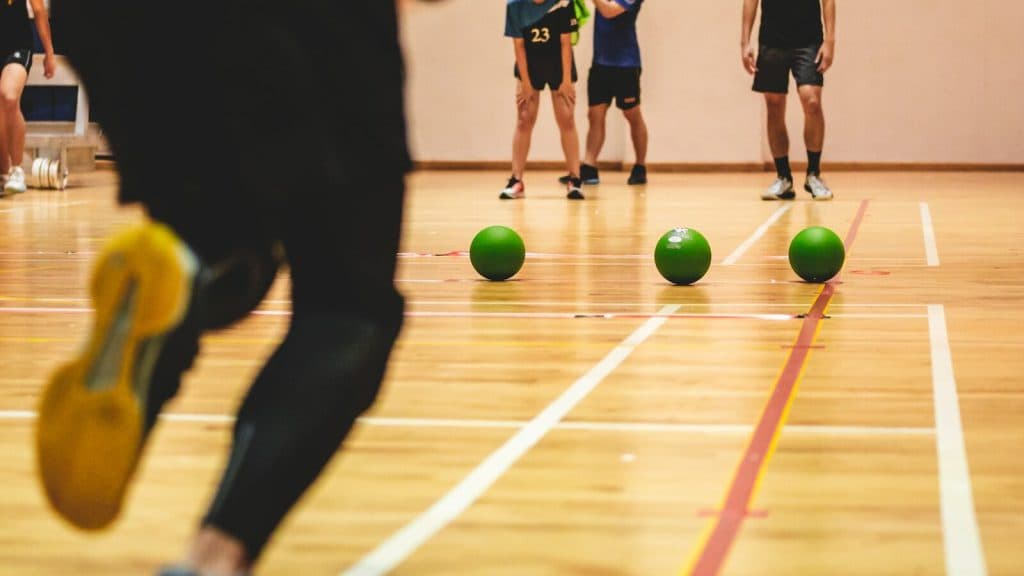
Two teams, one mission: don’t get hit by the ball. It’s as much about dodging as it is about aiming.
Why it's good
Introduces strategic depth, giving players multiple ways to contribute to the team's success beyond simply eliminating opponents.
11. Blindfolded drawing

One describes, the other draws. The catch? The artist is blindfolded. Say hello to trust and goodbye to Picasso.
Why it's good
Builds trust and hones communication skills, showing kids that different roles are essential for a team's success.
12. Over-under

Line up and pass a ball over your head and then under your legs. Sounds simple, but it's a fantastic lesson in rhythm.
Why it's good
Teaches kids the importance of pacing and rhythm in a team, fostering a sense of unity and collective timing.
13. Capture the flag

Two teams, two flags, and a lot of running. It’s a full-body exercise in strategy and dexterity.
Why it's good
Fosters strategic thinking, teamwork, and the importance of roles, as team members must both attack and defend effectively.
14. Simon says
Remember this one? It’s a workout for the brain, as kids have to listen carefully to follow Simon’s commands—or not.
Why it's good
Crank up the concentration and decision-making skills, as kids must quickly discern which Simon's commands will benefit the team more.
15. Water balloon toss
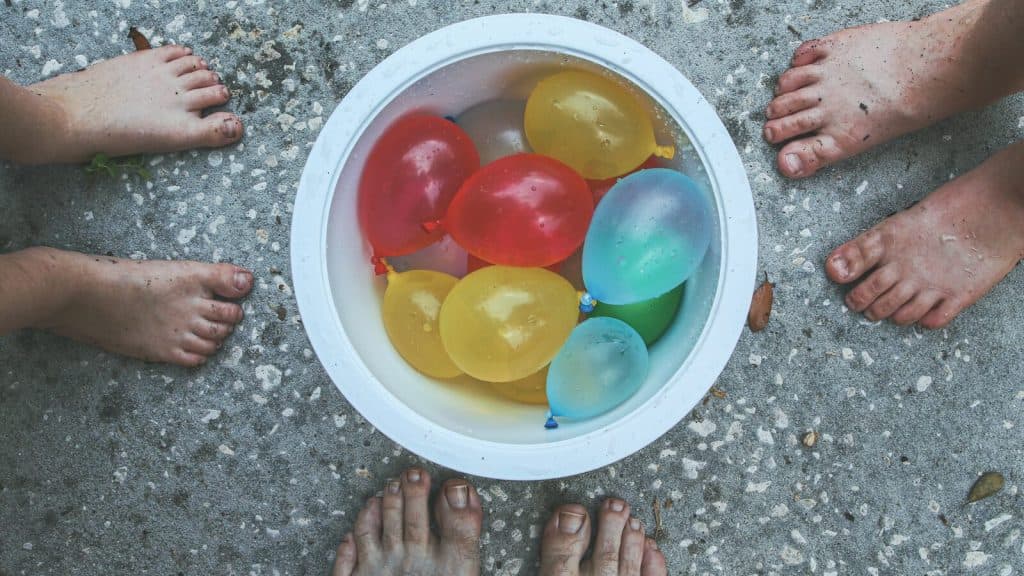
Throw a water balloon back and forth, taking a step back each time. Last pair with an intact balloon wins.
Why it's good
Teaches precision and trust as each player must both throw and catch carefully to avoid breaking the balloon.
Top Tip: Use eco-friendly balloons to keep Mother Earth in the game, too.
16. Tag
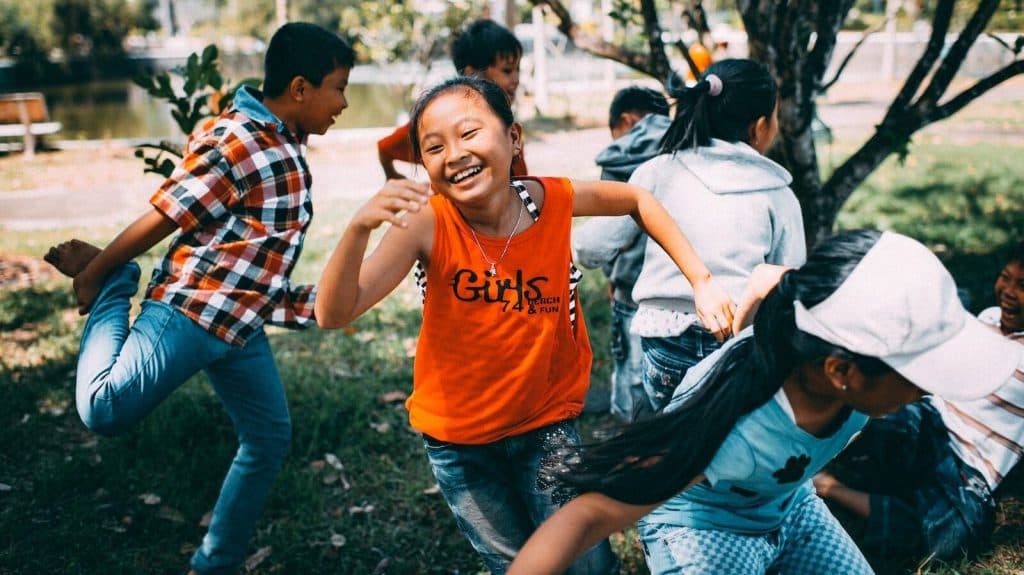
Classic and effective. Run and don’t get caught. Or be the catcher and strategize your moves.
Why it's good
Encourages strategy and coordination, even though it's every person for themselves, there's often an unspoken teamwork at play.
17. Pictionary

Draw it, guess it, and celebrate the win. A lesson in creative communication, one sketch at a time.
Why it's good
Fosters understanding and collaboration as kids must interpret visual information and relay their guesses quickly.
18. Musical chairs

When the music stops, grab a chair. It's not just a game; it's a dance-off with a twist.
Why it's good
Teaches adaptability and quick decision-making skills, as children must be ready to change their course of action instantaneously.
19. Jenga

Not just for quiet nights in. Team Jenga tests your structural instincts and tactile skills.
Why it's good
Encourages strategic thinking and precision, teaching the importance of making wise decisions for the collective good.
20. Bingo: movie mania

Imagine bingo cards filled with iconic movie scenes or characters - a cinematic twist on a classic game.
Movie bingo cards
Why it's good
This theme of bingo adds a layer of complexity, encouraging deeper thinking and a greater collective effort in remembering iconic lines.
21. Hot potato
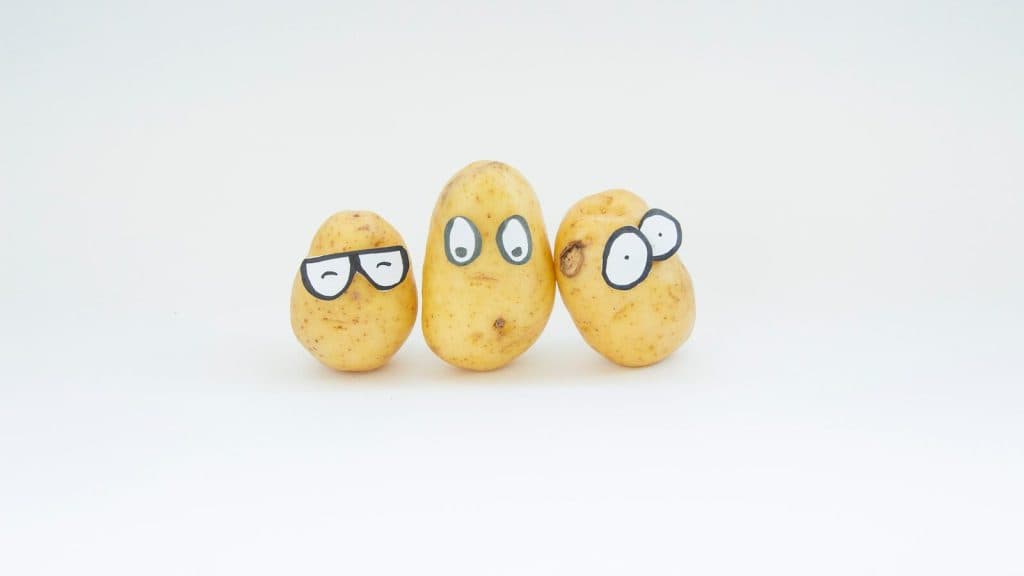
Pass it fast, or you’re out. Simple, but it teaches kids to think on their toes.
Why it's good
Teaches kids to be alert and attentive, reinforcing the importance of each individual’s role within a team.
22. Obstacle course
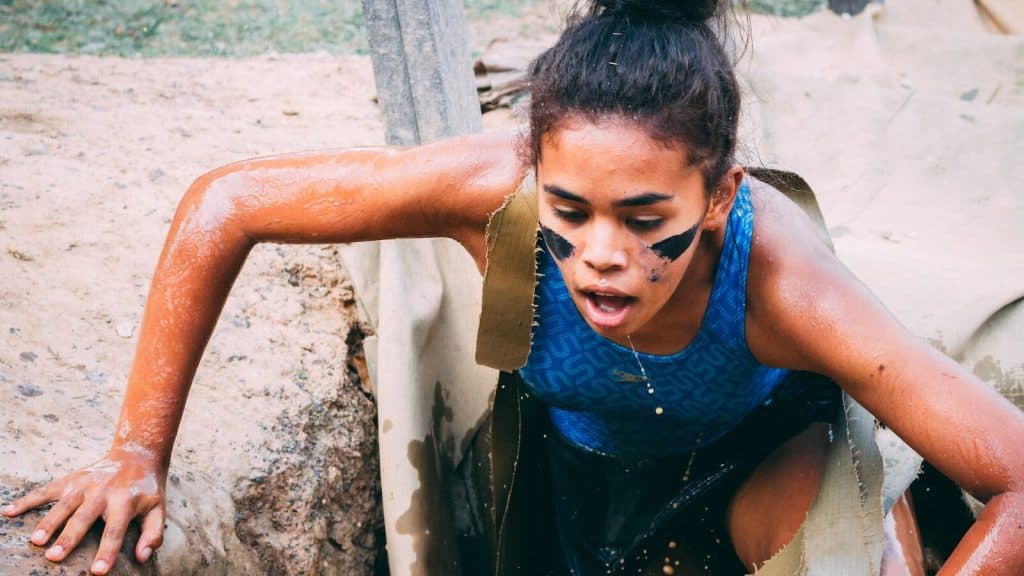
Let the adrenaline rush begin! Kids navigate through a maze of obstacles, racing against the clock or each other. It's not just a physical challenge, but a hilarious, high-energy bonding experience for the whole team.
Why it's good
Introduces an element of surprise and adaptability, requiring teams to rethink strategies on the fly.
23. Balloon pop

3, 2, 1, POP! In Balloon Pop, kids rush to pop balloons in the quickest time possible, finding hidden challenges or clues inside. It’s a thrilling and colorful way to add excitement and surprise to team-building.
Why it's good
Adds an intellectual twist to the physical act of popping balloons, enhancing teamwork through a blend of knowledge and action.
24. Freeze dance
Bust a move, then freeze! In this toe-tapping game, kids dance their hearts out until the music stops, then they have to freeze in place. It's the perfect blend of musical fun and dramatic suspense!
Why it's good
Promotes attention and discipline, teaching children to be in tune with a collective activity.
25. Spelling bee relay
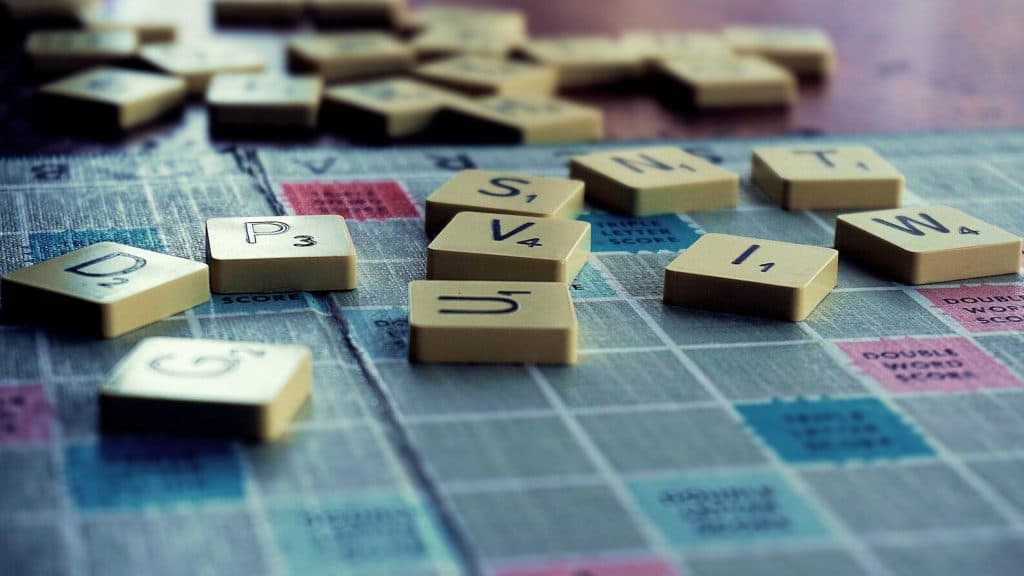
Run, spell, repeat! Teams race against each other in a relay format, taking turns to spell words correctly before sprinting back to their teams. It's a high-speed test of both spelling prowess and athletic ability.
Why it's good
Encourages collective intellectual effort and teaches the importance of every individual's contribution in achieving a common goal.
26. Alphabet scavenger hunt
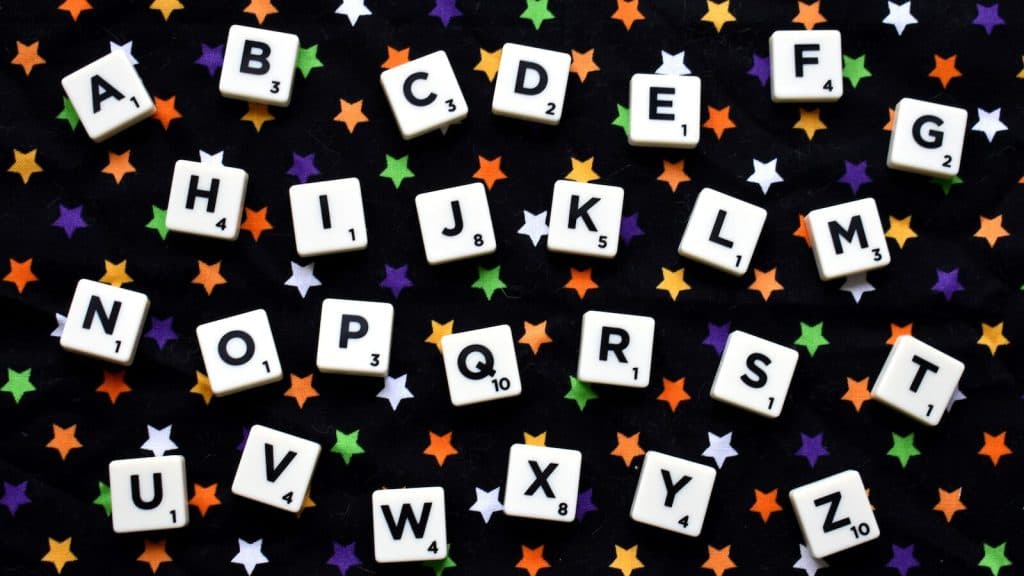
Search for objects starting with each letter of the alphabet. Finding an 'x' may be tricky, but that's where teamwork shines.
Why it's good
Teaches kids to work together in a strategic manner to locate diverse items, enhancing their collective vocabulary and observational skills.
27. Balloon stomp
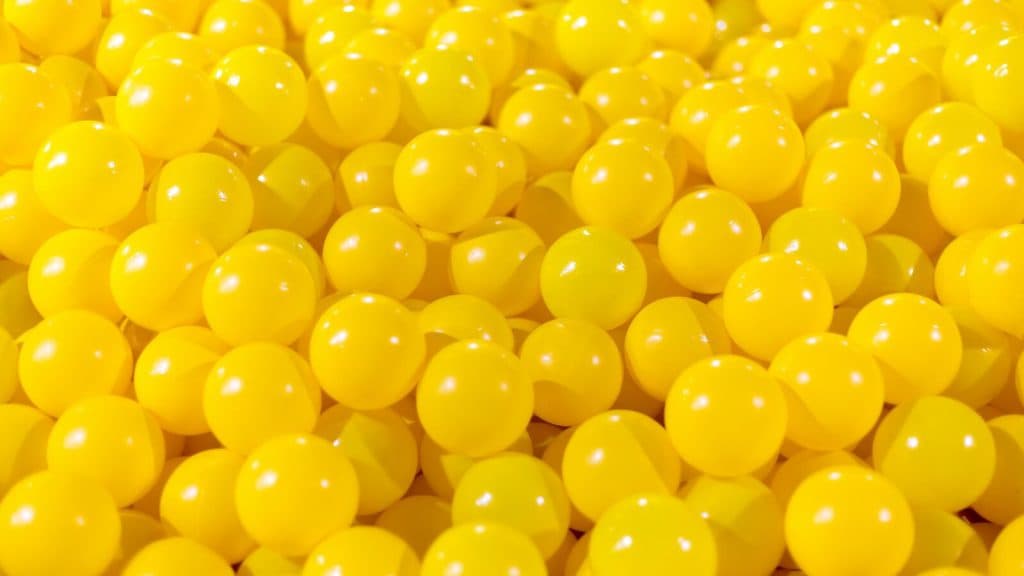
Attach balloons to ankles and try to pop each other’s balloons. It's a footloose frenzy that requires quick thinking and quicker feet.
Why it's good
Fosters agility and strategic thinking as kids must simultaneously attack and defend, often forming alliances to protect each other.
28. Telephone

Whisper a message down the line and see how it evolves. Communication 101 has never been this fun.
Why it's good
Promotes attentive listening and clear articulation, teaching kids the importance of effective communication in a team.
Top Tip: Make the original message humorous or utterly absurd for added entertainment value.
29. Story circle
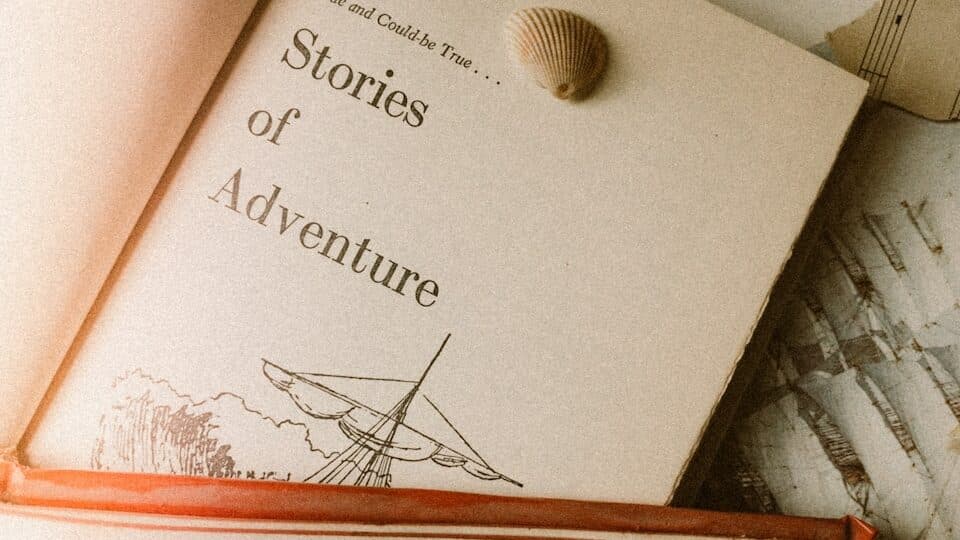
One starts a story, and everyone takes turns adding sentences. By the end, you’ll have a shared narrative of creativity.
Why it's good
Encourages creativity and active listening as each player must build upon what's been said before, crafting a story that is uniquely theirs.
30. Pass the parcel

The musical chairs of gift-giving! Kids pass a wrapped parcel around the circle while the music plays, unwrapping layers and discovering small prizes when the music stops. It's a game of luck, anticipation, and joyful unwrapping!
Why it's good
Enhances patience and the sense of collective joy as children root for each other during the unwrapping process.
31. Human tic-tac-toe
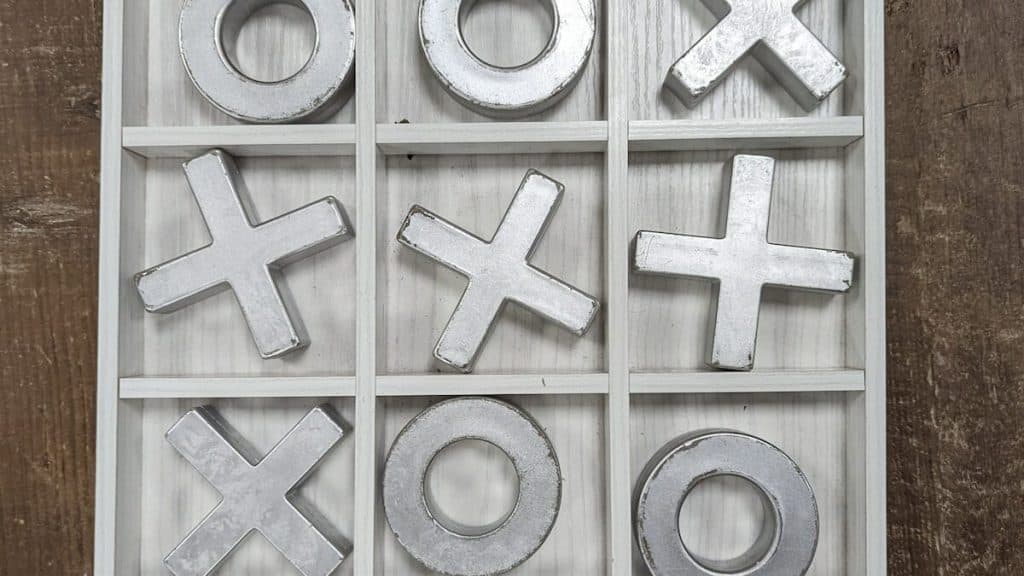
Turn the classic game into a full-body experience. Use tape to make a grid and use kids as the X's and O's.
Why it's good
Requires strategy and foresight, encouraging kids to think not just about their own moves, but about how their actions impact the team.
32. Build a story
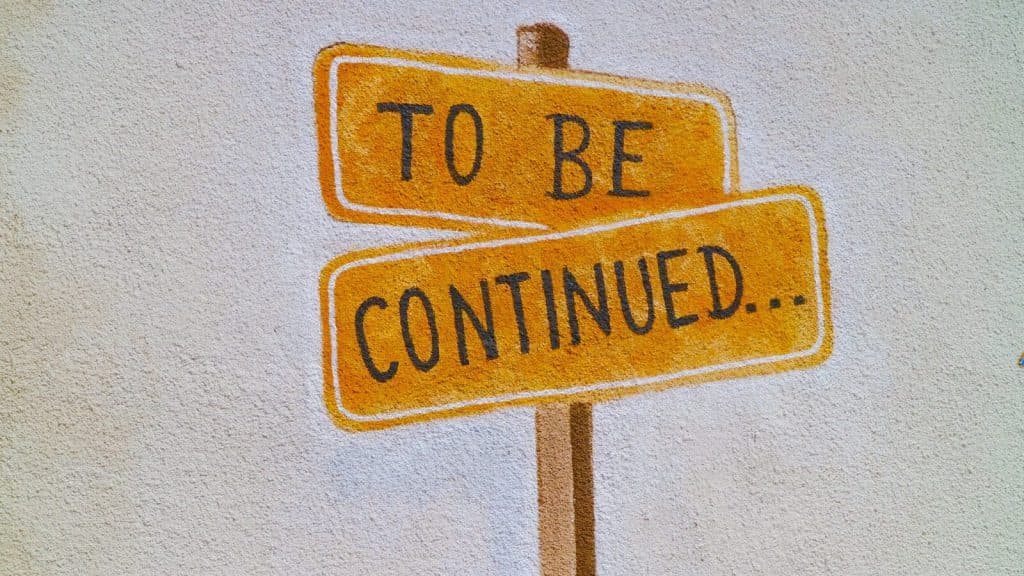
Let imaginations run wild! One child starts the story, and then each successive person adds a sentence, crafting a collective tale that's often as hilarious as it is creative.
Why it's good
Fosters a sense of long-term collective achievement, as the final product can be kept as a memento of their teamwork.
33. Animal charades

Like charades but with animal actions only. You haven't lived until you've seen an 8-year-old trying to act out a jellyfish.
Why it's good
Enhances empathy and observational skills as kids learn to pick up on non-verbal cues quickly.
34. Group juggle

Balls flying, kids laughing, and teamwork soaring! In Group Juggle, kids toss balls to each other in a specific order, honing their coordination and focus. But watch out: as the game progresses, more balls are added to up the ante!
Why it's good
Improves coordination and focus as the complexity increases, teaching kids to adapt and support each other in real-time.
35. Chalk art collaborations

Give each child a chalk color and a piece of pavement. They must work together to create a unified masterpiece.
36. 20 questions

Think of an object, person, or place. The team has 20 chances to guess what it is. A brilliant game for the curious.
37. Flashlight tag
Regular tag, but in the dark with flashlights. Brings out the inner spy in every kid.
Why it's good
Encourages stealth, strategy, and situational awareness. Kids learn to collaborate by sharing hiding spots or leading the "it" person away from teammates.
38. Minefield

Navigate through a maze of objects blindfolded, guided only by a teammate’s voice. Great for building trust and spatial awareness.
Why it's good
Builds trust and enhances listening skills, teaching the value of clear communication.
39. Trivia time

Who’s ready for a brainy showdown? In Trivia Time, kids answer questions from various categories. Not only does it test their knowledge, but it also brings out their competitive spirit in the best way possible.
Why it's good
Encourages well-rounded knowledge and teamwork as kids put their heads together to come up with the correct answers.
40. Bingo: food frenzy

Who knew food and bingo made such a tasty combo? Create food-based bingo cards for a mouthwatering match-up.
Why not try some of our pre-made food themed bingo cards?
Templates
Why it's good
Adds a delicious twist, making the game relatable and engaging, which in turn encourages teamwork.
41. Puzzling out
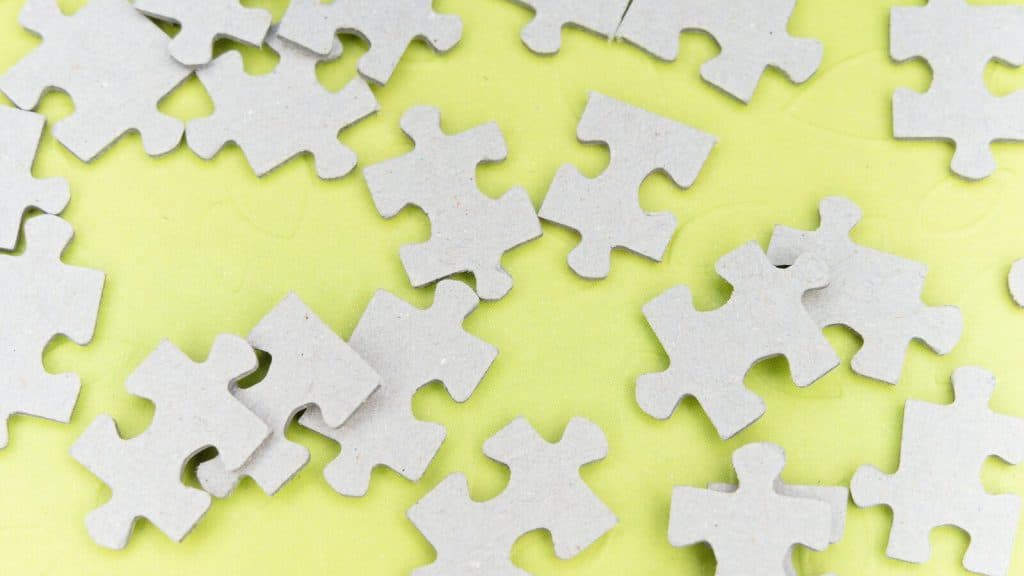
Give each team a puzzle. The first to complete it wins. This old-school game is a hands-on lesson in patience and focus.
Why it's good
Encourages problem-solving skills and shows the importance of each individual's contribution to the bigger picture.
42. Parachute games
With a large parachute and a small ball, try various games like 'Popcorn' where you shake the parachute to keep the ball bouncing.
Why it's good
Improves coordination and teaches kids to predict their teammates' actions, building synergy and trust.
43. Sardines
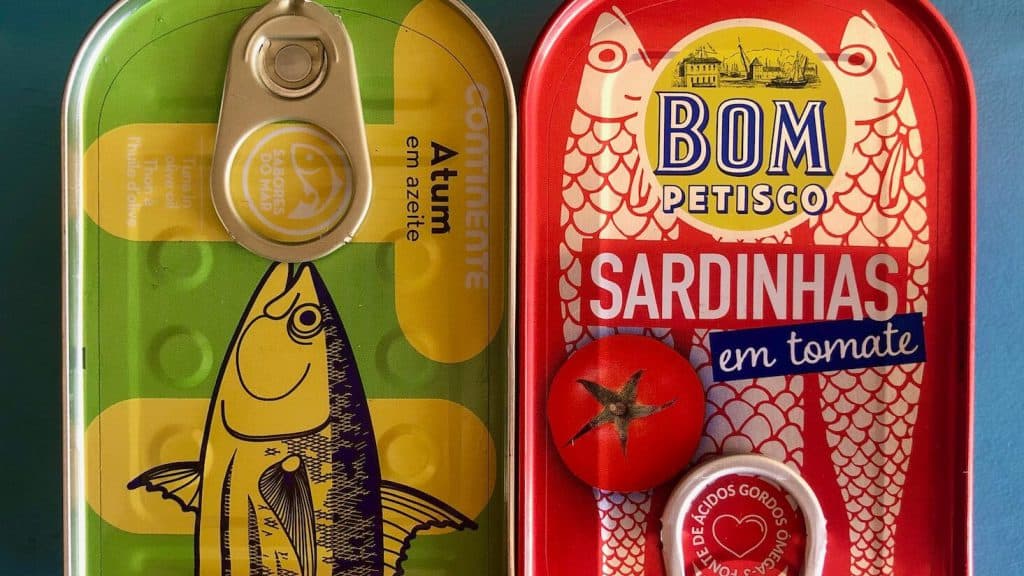
It’s like hide and seek, but in reverse. One hides, everyone seeks, and they join the hidden person once found.
Why it's good
Promotes collective action and the thrill of shared discovery, teaching kids the value of unity.
44. Frisbee golf
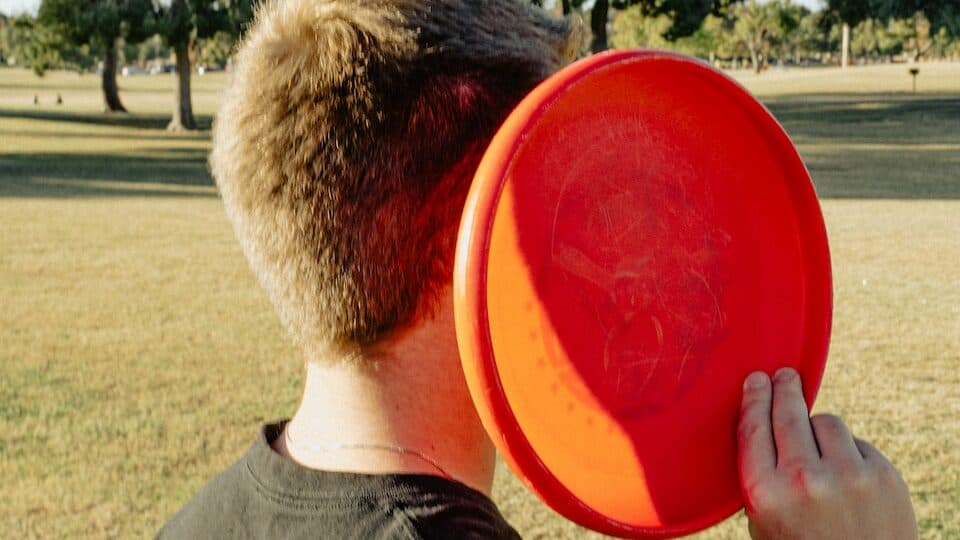
Set up goals and try to get a frisbee through them in as few throws as possible. Think golf, but far less stuffy.
Why it's good
Encourages strategic thinking and precision, teaching kids to focus not just on individual skills but on how they can contribute to team success.
45. Relay races
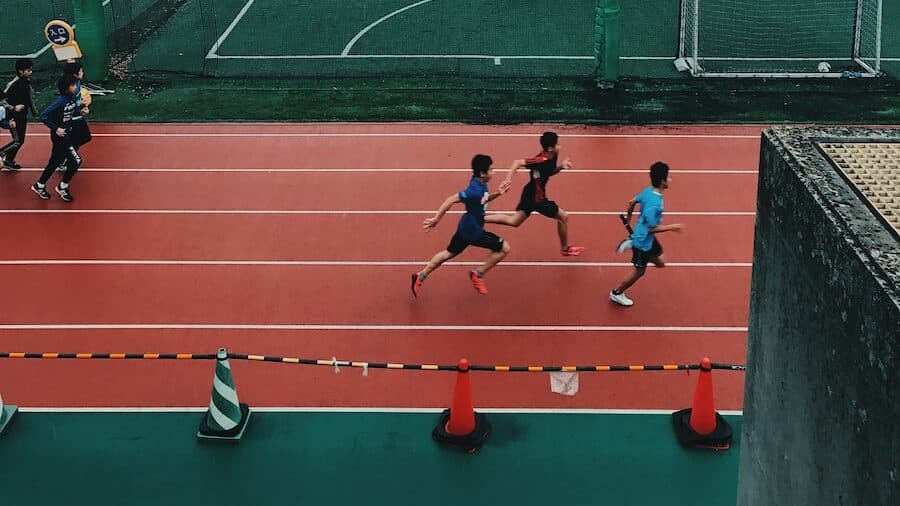
Nothing beats the good old relay. Passing the baton successfully is the first step to becoming a team player.
Why it's good
Highlights the importance of seamless collaboration and speed, offering a lesson in trust and mutual support.
46. Newspaper fashion show

Equip kids with newspapers and tape. The goal? To create high fashion outfits in 20 minutes. Future designers, assemble!
Why it's good
Fosters creativity and delegation of roles, from designers to models, celebrating each child's unique contributions.
47. Marble run

Teams get straws and cardboard to build a marble track. Fastest marble to the finish line wins!
48. Sink the ship

Teams make paper boats and try to sink each other’s fleet by throwing small balls. It's Battleship without the board.
Why it's good
Builds aim, strategy, and collective joy as each sunk ship gets a cheer from the team.
49. Word association
Say a word, and the next person says the first word that comes to mind. It's a quick-fire way to get those neurons firing.
Why it's good
Enhances quick thinking and broadens vocabulary while building on each other’s ideas, making for a well-oiled mental machine.
50. Duck, duck, goose
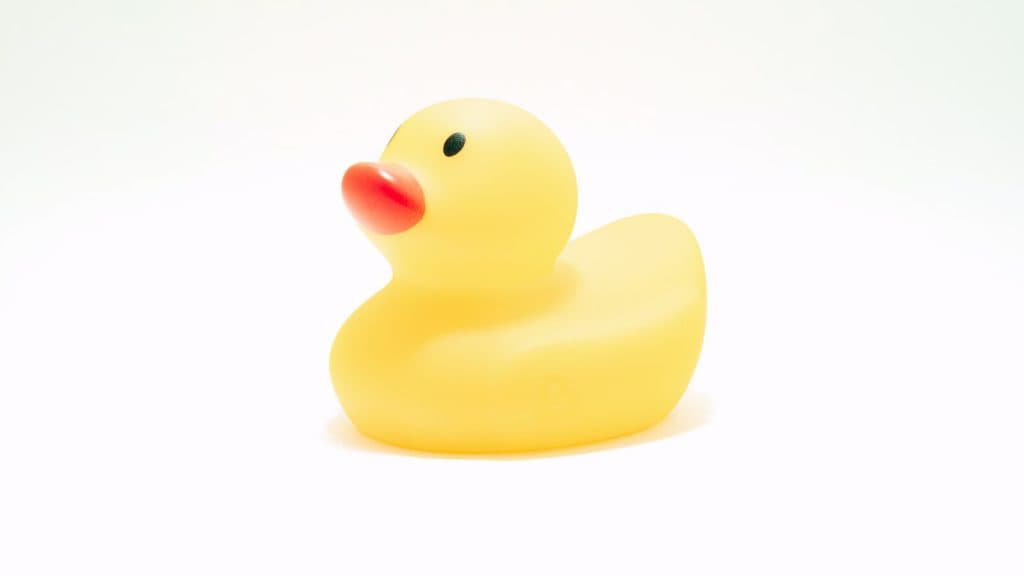
Last but not least, this timeless game adds a dash of adrenaline to the mix. When someone shouts 'Goose!', the chase is on.
Why it's good
Encourages quick decision-making and agility, instilling a sense of competition yet camaraderie.
Summary
And that's our list! Get ready for more action-packed, team-building adventures that are both fun and educational for kids. After all, why should adults have all the team-building fun?
Was this article helpful?
Comments

Log into Bingo Card Creator
Log in to share your opinion about this article
Get this week's best Bingo content.

Related articles
Browse all
50 summer activities for kids
Discover 50 fun summer activities for kids, from beach bingo to backyard forts—easy, screen-free ideas to keep children entertained, creative, and active all season.
8 min read
50 fun Easter family activities
Discover 50 fun Easter family activities! From egg hunts and crafts to delicious recipes and games, create lasting memories with these creative and enjoyable ideas.
22 min read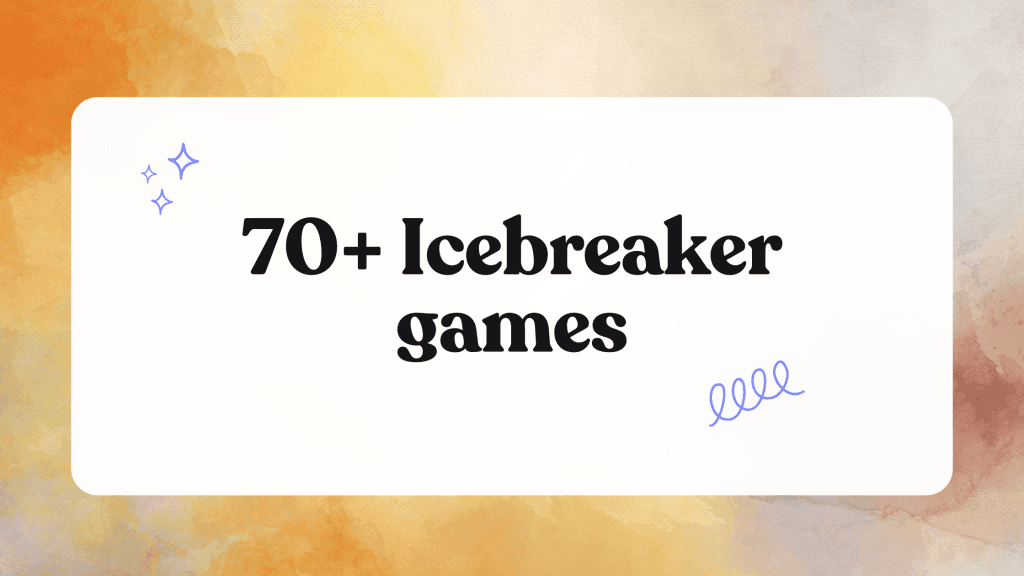
70+ icebreaker games
Explore our collection of over 70 engaging icebreaker games designed to spark conversation, boost team spirit, and energize groups
21 min read

